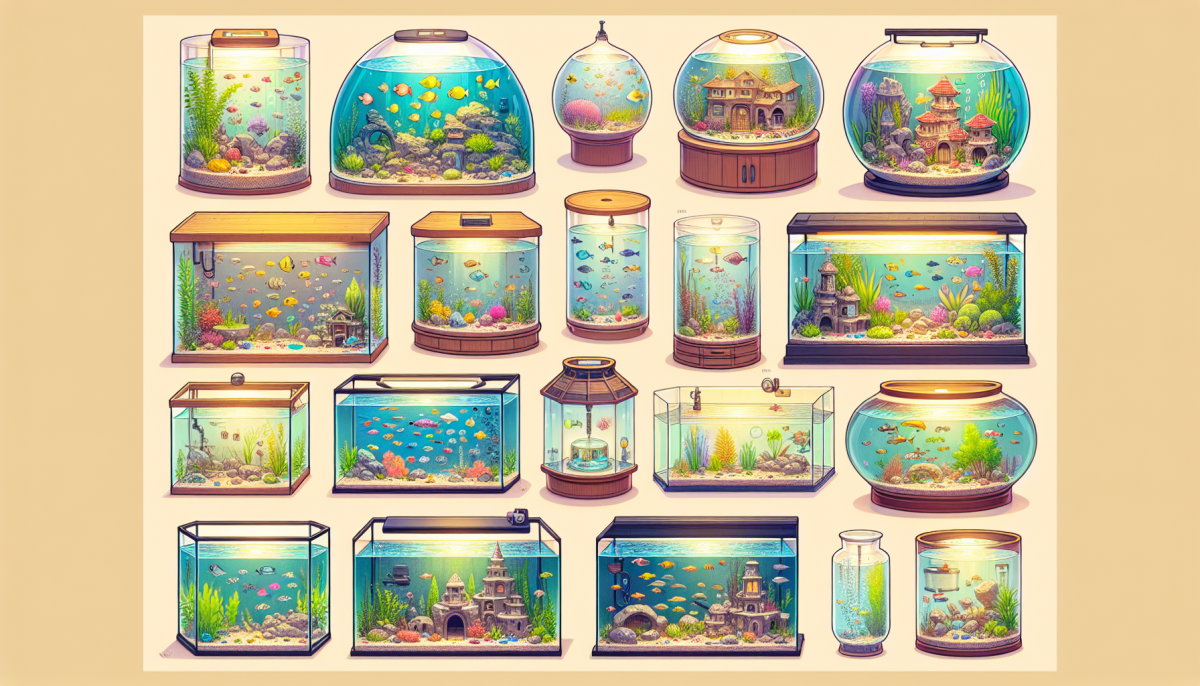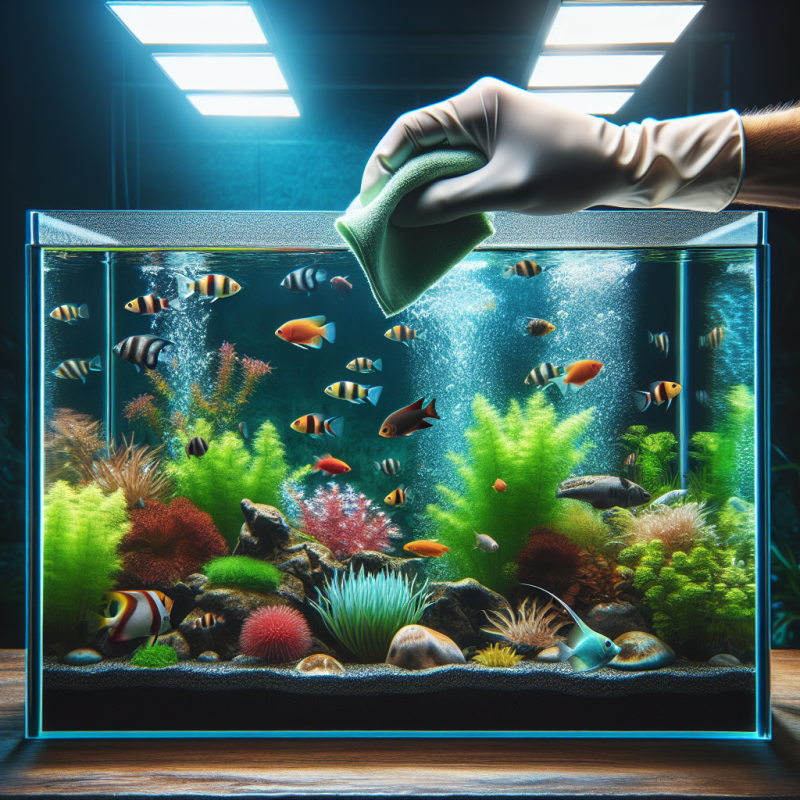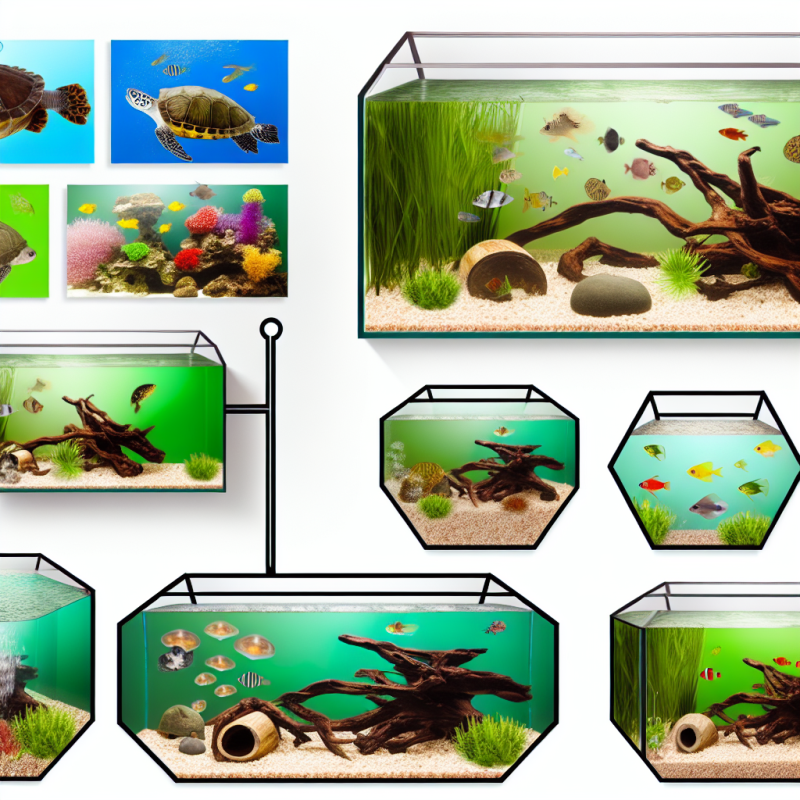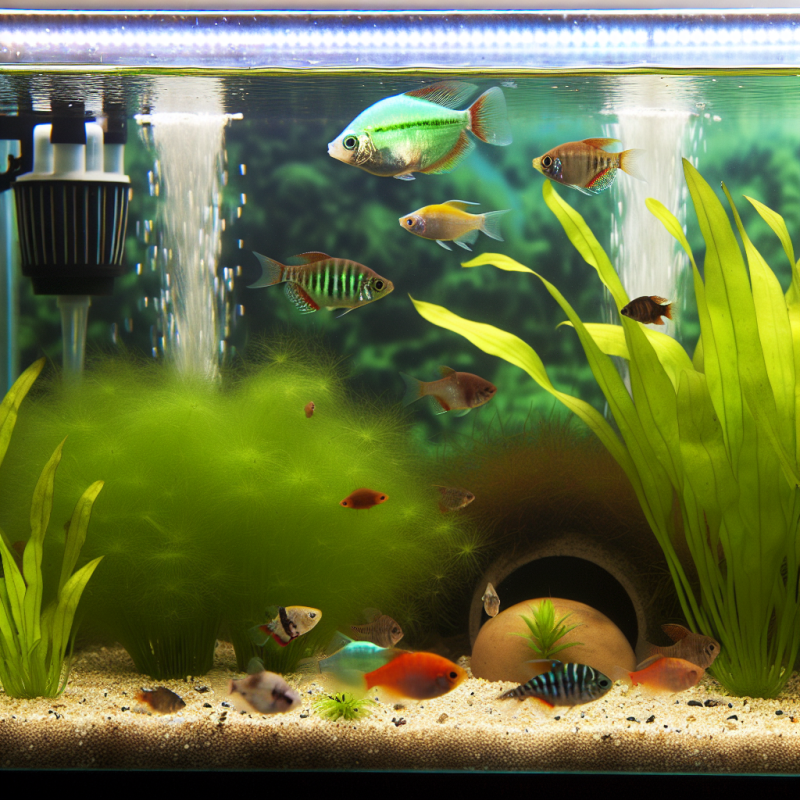An aquarium or tank is an artificial water environment for aquatic plants, animals, and other living organisms. Although aquariums come in a wide variety of shapes and sizes, all aquariums are designed to maintain a constant and stable aquatic environment. This article will provide an overview of the different types of aquariums and tanks available, their various sizes and shapes, and how to maintain them properly.
Freshwater Aquariums
Freshwater aquariums create an interesting and enjoyable environment to keep creatures such as tropical fish and other aquatic life. Freshwater aquariums are typically smaller than their saltwater counterparts, and cost less to maintain. This makes them a great option for novice aquarists.
Setting up a freshwater aquarium requires selecting an appropriate location that is away from direct sunlight and drafts and has an adequate power outlet. Starting the aquarium requires choosing the right size tank, gravel and other substrate, heater, filter, plants, and décor. Many tropical fish require a specific water temperature and quality, so setting and testing the proper pH level of the aquarium is a must. After these items are in place, it is important to cycle the tank. This involves adding a small amount of fish and allowing their waste to cultivate beneficial bacteria that will help keep the water clean.
The selection of species for a freshwater tank is much greater than for a saltwater tank. Popular choices include tetras, gouramis, angelfish, barbs, cichlids, and many more. Different species of fish require different levels of care, some of which may need special lighting, temperature, and filtration. When combined with ornamental plants and aquarium decorations, a freshwater aquarium can be a truly beautiful and vibrant habitat to admire and enjoy.
Saltwater Aquariums
Saltwater aquariums are a type of aquarium that typically includes a number of fish and other aquatic creatures in a saltwater environment. Saltwater aquariums are usually found in homes, offices and other public spaces. Saltwater aquariums can be used to create a beautiful, naturalistic environment for your home, office, or public space.
Saltwater aquariums can be very rewarding, as they often require a lot more effort and care than freshwater aquariums. Although saltwater aquariums can be more costly than freshwater setups, with proper research and care, they can provide a vibrant, enjoyable and often mesmerizing display of life.
Saltwater aquariums can be expensive to maintain, requiring a variety of equipment such as protein skimmers and tanks, and additional chemical filtration technology. In order to ensure the health of your tank and its inhabitants, regular water changes and filtration will be necessary.
In addition to the necessary equipment, a little effort is required to ensure that your tank is healthy and thriving. Researching fish and other saltwater creatures, observing the tank often and providing proper nutrition are all important considerations when maintaining a saltwater aquarium.
Outdoor Tanks
Outdoor tanks are becoming a popular choice for hobbyists interested in having an aquarium outdoors. These tanks are a great choice for those looking to create a unique and beautiful display right in their backyard. So what is an outdoor tank?
An outdoor tank is any type of aquarium that is specially designed to be set up outdoors. These tanks are typically much bigger than regular indoor aquariums and are constructed to be able to withstand different weather conditions. Outdoor tanks can be small, medium, or large in size, and can range from a simple bowl or tub for fish to a complex ecosystem for plants and animals.
Outdoor tanks require a bit more maintenance than indoor aquariums, due to the extreme temperature changes and humidity from the environment. It’s important to make sure the tank is securely covered and that the water inside is properly aerated. Additionally, the tank should be placed so that it receives at least six hours of direct sunlight a day in order to ensure that the water remains at the optimal temperature for any creatures living there.
Creating and maintaining an outdoor tank can be a rewarding experience for hobbyists, and can provide a unique experience that is unlike any other type of aquarium. Those interested in taking on an outdoor tank should research the special care and attention needed to maintain a healthy balance in their outdoor tank ecosystem.
Pros and Cons of Different Types of Tanks
Freshwater Tanks
- Pros: Freshwater tanks are easy to maintain and require fewer frequent water changes than saltwater tanks. Additionally, freshwater tanks are more affordable than saltwater tanks, both in terms of initial cost and in the cost of fish and supplies.
- Cons: Freshwater tanks tend to be smaller than saltwater tanks and require more frequent testing for water parameters. Additionally, certain types of freshwater fish may be more difficult to source and maintain than certain types of saltwater fish.
Saltwater Tanks
- Pros: Saltwater tanks are larger than freshwater tanks and provide a more complex and interesting environment for fish. Additionally, many types of saltwater fish can be found in abundance in the ocean, so they are easier to source than many types of freshwater fish.
- Cons: Saltwater tanks require more frequent testing for higher water parameters and more frequent water changes than freshwater tanks. Additionally, saltwater tanks tend to be more expensive than freshwater tanks in terms of both initial costs and maintenance costs.
Invertebrate Tanks
- Pros: Invertebrate tanks require less frequent water changes and are easier to maintain than either freshwater or saltwater tanks. Additionally, they are usually less expensive than either type of aquatic environment.
- Cons: Invertebrate tanks may not provide much visual interest and require specific temperature and water quality requirements in order to be successful.
Conclusion
It is important for fish keepers to understand the different types of aquariums and tanks available. Different types of aquariums and tanks can provide different benefits and advantages to fish keepers. Some aquariums or tanks can be better suited for certain types of fish, while others can provide better aesthetics or fitting of certain fish keeping accessories. Ultimately, it is important to determine what the best option is based on the needs of the fish keeper.
Regardless of the type of aquarium or tank chosen, all tank owners should still remain committed to providing their fish with the quality of care they need. That includes understanding the importance of water quality, tank size, as well as the size and needs of the fish themselves.
Fish keeping is a wonderful hobby, and finding the right aquarium or tank for the specific needs of the fish keeper and fish can bring about great success.



